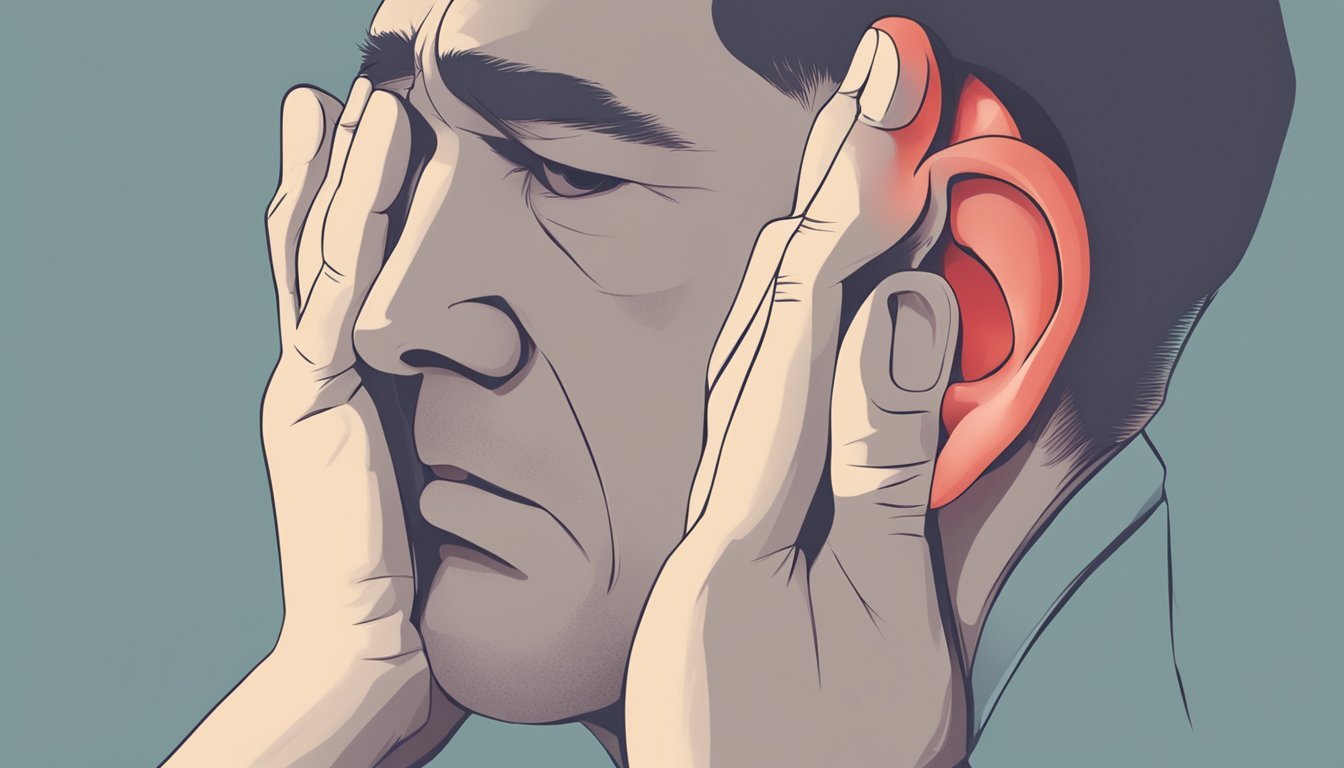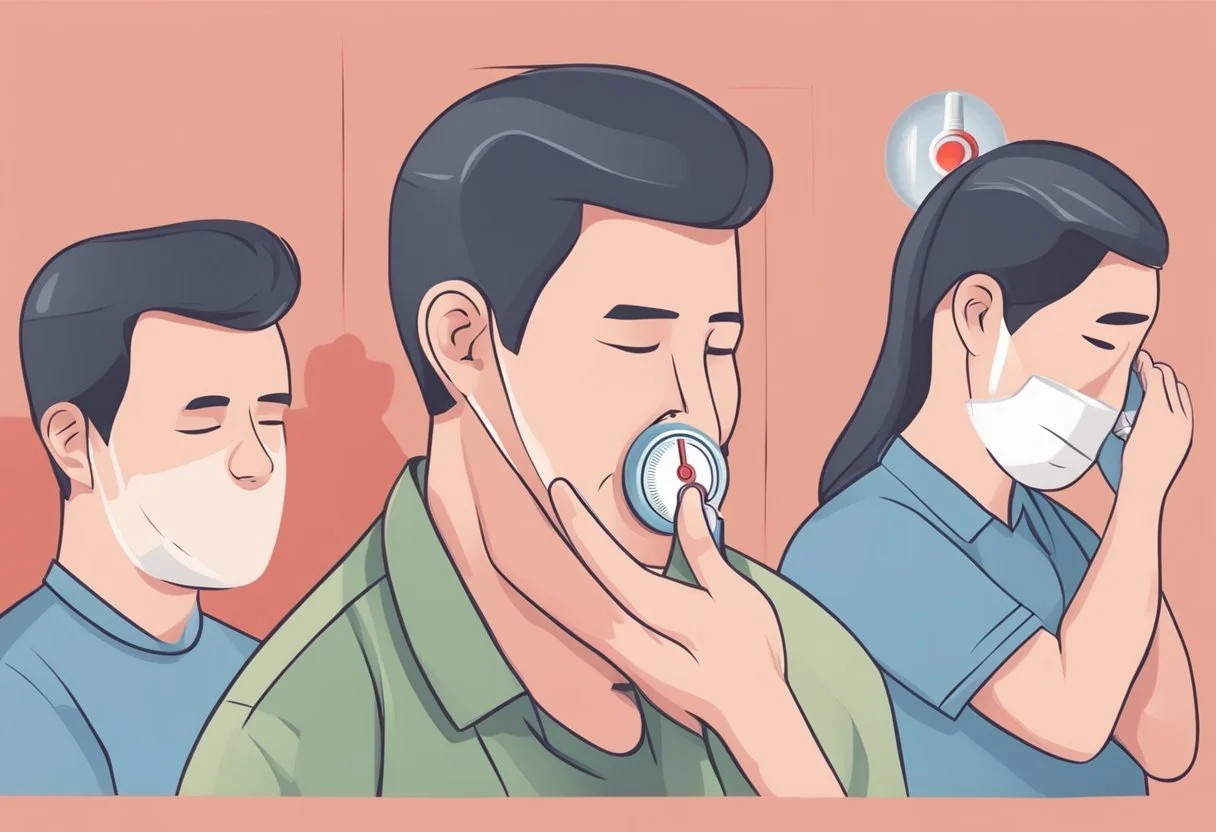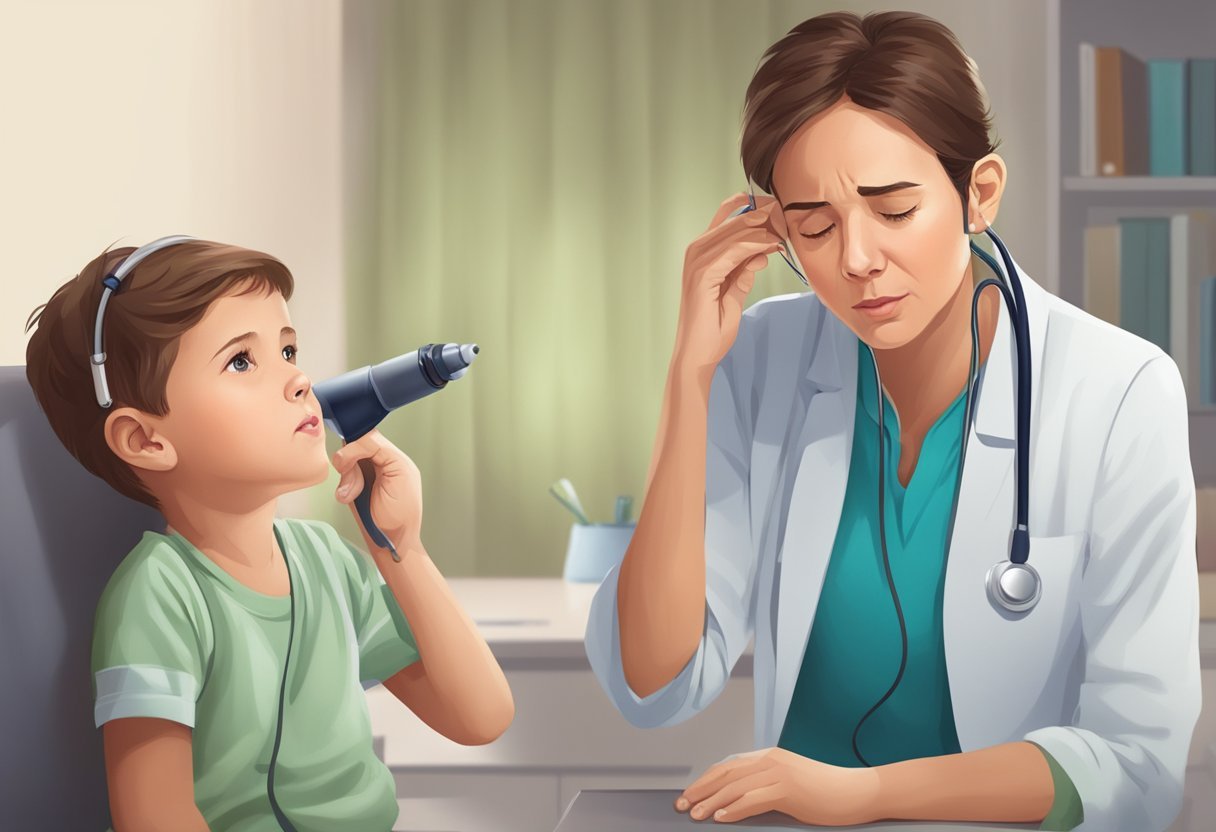Ear Infection
Symptoms, Causes, and Home Remedies
Discover > Health Conditions > Ear Infection: Symptoms, Causes, Home Remedies
Ear infections are a common ailment experienced by people of all ages, affecting millions each year. They occur when bacteria or viruses enter the ear canal, leading to inflammation and discomfort. Identifying the symptoms and understanding the causes of ear infections can help individuals take steps towards prevention and mitigation.
The symptoms of an ear infection can vary depending on the severity and type of infection. Common indicators include pain, impaired hearing, fever, and a sense of fullness in the ear. Recognizing these key symptoms early on is vital for timely treatment and alleviating any potential complications.
In addition to medical interventions, many individuals opt for home remedies to ease the discomfort of ear infections. While some remedies are quite effective, it is essential to remember that they should not replace professional medical assessment and treatment. With proper knowledge and guidance, dealing with ear infections becomes a manageable task for both patients and caretakers.
Understanding Ear Infections
Ear infections are common ailments that affect the middle ear, outer ear, or inner ear. They often result from bacterial or viral infections, and can cause irritation, inflammation, and discomfort. This section will provide a brief overview of ear infections, including their causes and types such as otitis media.
The ear is comprised of three main parts: the outer ear, middle ear, and inner ear. Each section can be affected by infection in varying ways.
Otitis Media and Bacteria
Otitis media is one of the most common types of ear infections, affecting the middle ear. It occurs when bacteria or viruses enter the middle ear, causing inflammation and fluid buildup behind the eardrum. This condition is more prevalent in children due to their narrower Eustachian tubes, which connect the middle ear to the back of the throat.
Some common symptoms of otitis media include:
Earache
Loss of hearing
Fever
Irritability
Outer Ear Infections
Outer ear infections occur when bacteria or fungi infiltrate the outer ear canal, causing inflammation and discomfort. Swimmer's ear is a common example of this kind of infection, as water can become trapped in the ear, creating a favorable environment for bacterial growth. Symptoms of outer ear infections can consist of:
Itching
Pain
Swelling
Discharge
Inner Ear Infections
Inner ear infections, or labyrinthitis, are less common than otitis media and outer ear infections. They involve inflammation of the inner ear structures, commonly due to a viral or bacterial infection. Disruptions in the inner ear's delicate balance system can cause symptoms such as:
In conclusion, ear infections can arise from bacterial or viral invasions of the different parts of the ear. They can range from mild to severe in nature and may require medical intervention if symptoms persist or worsen. Awareness and early detection of symptoms play a crucial role in managing and treating ear infections effectively.
Symptoms of an Ear Infection
Ear infections can present a variety of symptoms, often depending on the type of infection and the individual affected. Identifying these symptoms is essential to seek timely medical attention and receive proper treatment. Below is a list of common symptoms associated with ear infections:
Ear pain: This is usually the most noticeable symptom and can range from mild discomfort to severe pain, especially when chewing or lying down.
Fever: A fever may accompany an ear infection, signaling the body's attempt to fight off the infection.
Trouble hearing: Muffled hearing or temporary hearing loss may occur due to the inflammation and buildup of fluid in the middle ear.
Dizziness: Infections of the inner ear can cause dizziness or a sensation of the room spinning, also known as vertigo.
Discharge: Pus or other drainage may leak from the affected ear, particularly in cases of a ruptured eardrum.
Nausea and vomiting: These symptoms can arise as a result of dizziness or vertigo caused by an inner ear infection.
It's important to note that not all individuals with an ear infection will experience all of these symptoms. Some may only have one or two, while others may have a combination of them. Differentiating between the types of ear infections can be helpful in understanding the symptoms. There are three main types of ear infections:
Acute otitis media (AOM): This is the most common type of ear infection, typically characterized by ear pain, fever, and sometimes drainage if the eardrum bursts.
Otitis media with effusion (OME): This occurs when fluid remains trapped in the middle ear after AOM has resolved or due to other causes, leading to trouble hearing and a feeling of fullness in the ear.
Chronic suppurative otitis media (CSOM): A persistent ear infection with ongoing drainage, sometimes accompanied by pain and hearing loss.
If you or someone you know is experiencing any of these symptoms, consult a healthcare professional for proper evaluation and treatment.
Causes and Risk Factors
Ear infections can be caused by bacterial or viral infections, and several factors can increase a person's risk of developing one. Understanding these factors can help reduce the likelihood of experiencing this common and painful condition.
Age plays a significant role in the development of ear infections, particularly in children. They have smaller eustachian tubes, making them more prone to blockage, which can lead to infection. Additionally, children's adenoids are relatively larger, which can also contribute to blockage and infection.
Allergies can have a direct impact on ear infections. When a person has an allergy, their body produces histamine. This can cause the eustachian tubes to become swollen and obstructed, creating an ideal environment for bacterial or viral infections to develop.
People who often suffer from the common cold are more susceptible to ear infections. The cold virus can cause the eustachian tubes to swell, leading to a potential blockage and subsequent infection.
Here are some additional risk factors for ear infections:
Exposure to cigarette smoke or air pollution, which can irritate and inflame the eustachian tubes.
Bottle-feeding babies in a lying-down position, as this can encourage fluids to enter the middle ear.
Frequent use of pacifiers, which has been associated with a higher risk of ear infections in young children.
A family history of ear infections, suggesting a genetic predisposition.
In conclusion, a combination of factors such as bacterial or viral infections, age, allergies, eustachian tube function, and environmental factors can all contribute to the development of ear infections. Understanding and managing these risk factors can be an essential step in preventing and treating ear infections effectively.
Ear Infections in Different Age Groups
Ear infections are a common ailment across different age groups, particularly among children and adults. The severity and causes of ear infections may vary depending on age, but the symptoms are quite similar.
Children are more prone to ear infections due to the shorter and narrower shape of their Eustachian tubes, which makes it easier for bacteria to enter and cause an infection. Additionally, their immune systems are still developing, leading to a higher susceptibility to infections in general. Common causes of ear infections in children include colds, sinus infections, and allergies.
Symptoms in children may include:
Pain or discomfort in the ear
Fever
Tugging or pulling at the ear
Difficulty sleeping
Irritability
Adults also experience ear infections, though at a lower frequency compared to children. The main causes can include upper respiratory tract infections, allergies, or nasal congestion, which can lead to trapped fluid and bacteria in the middle ear.
Symptoms in adults often include:
Ear pain
Pressure or fullness in the ear
Hearing loss
Dizziness
There are several home remedies that can provide relief for both children and adults suffering from ear infections:
Warm or cold compress: Apply a warm or cold pack to the affected ear to help alleviate pain and discomfort.
Over-the-counter (OTC) pain relievers: Use OTC pain medications, such as acetaminophen or ibuprofen, to help reduce fever and alleviate pain. Note that aspirin should not be given to children.
Elevation: Keep the head elevated to help reduce pressure in the affected ear, which can alleviate pain.
Gargling with salt water: This can help reduce nasal congestion and promote drainage of the Eustachian tubes.
In cases where the ear infection is severe or persistent, it is essential to consult a healthcare professional for proper evaluation and treatment. They may prescribe antibiotics to combat bacterial infections, or recommend other medical interventions, depending on the cause and severity of the infection.
Complications of Ear Infections
Ear infections, if left untreated, can lead to a few severe complications. Some of the most common complications include hearing loss, meningitis, and mastoiditis. This section discusses these complications in more detail and provides information on their potential consequences.
Hearing Loss: One of the possible complications of an ear infection is temporary or permanent hearing loss. This can occur if the infection damages the eardrum or the small bones in the middle ear. In some cases, temporary hearing loss may resolve once the infection is treated. However, if the damage is significant, it may lead to permanent hearing loss.
Meningitis: Meningitis is a potentially life-threatening complication caused by the spread of bacteria from an ear infection to the protective membranes surrounding the brain and spinal cord. Symptoms of meningitis can include a high fever, severe headache, neck stiffness, and sensitivity to light. Early diagnosis and treatment with antibiotics are crucial to prevent long-term consequences such as brain damage or even death.
Mastoiditis: The mastoid bone, located behind the ear, can become infected when an ear infection spreads to this area. This condition is known as mastoiditis. It is essential to detect and treat mastoiditis early to prevent more severe complications, such as an abscess within the mastoid bone or the spread of infection to the brain. Treatment may involve antibiotics and, in some cases, surgery to drain the infected matter from the mastoid bone.
Always consult with a healthcare professional if you suspect an ear infection to minimize the risk of these potential complications.
Diagnosis of Ear Infections
To accurately diagnose an ear infection, a doctor will examine the patient and gather information about the symptoms they have experienced. An important tool for diagnosing ear infections is the otoscope, which allows the doctor to look into the patient's ear canal and visualize the eardrum for signs of inflammation or infection.
During the examination, the doctor will search for common signs of an ear infection such as redness, swelling, and pus discharge in the ear canal. They may also check for any tenderness or pain when gently pulling on the outer ear, which could indicate an infection in the middle ear. Additionally, the doctor might ask about the patient's medical history and any recent instances of cold, flu, or allergy symptoms that could contribute to an ear infection.
In some cases, the doctor might use a diagnostic test called tympanometry to gather more information about the health of the middle ear. Tympanometry measures the movement of the eardrum in response to changes in air pressure. An abnormal tympanometry result could be an indication of a blocked Eustachian tube, which is commonly associated with middle ear infections.
It is crucial for anyone experiencing symptoms of an ear infection to seek medical attention in a timely manner. Early and accurate diagnosis can prevent complications and lead to a more effective treatment plan. By employing the methods mentioned above, healthcare professionals can confidently diagnose ear infections and help patients on their path to recovery.
Traditional Treatment Methods
Ear infections can cause discomfort and pain, leading individuals to seek treatment methods for relief. There are several traditional treatment methods that have been found to be effective in treating ear infections. Some of the most common treatments include antibiotics, decongestants, antihistamines, ear drops, vaccines, and ear tubes. This section will briefly discuss these various treatment options.
For bacterial ear infections, antibiotics are often the primary treatment method. Doctors might prescribe oral antibiotics or antibiotic ear drops, depending on the severity of the infection. It is essential to follow the prescribed dosage and complete the full course of antibiotics to ensure the infection is fully resolved.
Some ear infections can cause congestion and inflammation in the Eustachian tubes, leading to further discomfort. In such cases, decongestants are often helpful in relieving the pressure and improving the overall symptoms. However, decongestants should be used cautiously, as they can occasionally cause side effects like increased heart rate or difficulty sleeping.
Antihistamines are another option for individuals who experience ear infections due to allergies. These medications can help reduce symptoms by targeting the histamine release responsible for the allergic response. As with decongestants, it is essential to follow the recommended dosage and use caution, as some antihistamines can cause drowsiness.
Topical ear drops containing pain relievers, corticosteroids, or antibiotics can be beneficial in treating ear infections as well. They are applied directly into the ear canal to help reduce pain, inflammation, and infection. It is crucial to follow the recommended dosage and duration of use for these ear drops to ensure proper treatment.
Vaccines can also play a role in reducing the risk of ear infections, particularly in children. Vaccines for common pathogens like Haemophilus influenzae and Streptococcus pneumoniae can help prevent infections that may lead to ear problems. Regular vaccinations are an important part of maintaining overall health and minimizing the risk of illness.
In more severe cases, or when traditional treatment methods do not provide relief, a doctor may recommend ear tubes as a treatment option. These small tubes are surgically placed into the eardrum to help with drainage and prevent the build-up of fluid, reducing the risk of infection. Ear tubes can be especially helpful for children who experience chronic ear infections.
Each treatment option has its unique benefits and risks depending on the individual's condition. It is essential to consult with a healthcare professional to determine the most appropriate treatment method for one's specific situation.
Pain Management for Ear Infections
Managing pain from ear infections can be an essential part of the healing process. Often, individuals look for over-the-counter (OTC) pain relievers that provide quick relief. Some common options used for this purpose include acetaminophen (Tylenol) and ibuprofen (Advil).
Acetaminophen works by blocking pain signals to the brain and is considered a generally safe choice for all age groups. However, it is crucial to follow the recommended dosages, as exceeding them could lead to liver damage. The recommended dosage for adults is 650 to 1000 mg, taken every four to six hours, not exceeding a total of 3000 mg per day. For children, the dosage should be adjusted according to their weight and only as directed by a healthcare professional.
Ibuprofen is a nonsteroidal anti-inflammatory drug (NSAID) that helps alleviate pain by reducing inflammation around the infected ear. The adult dosage for ibuprofen is typically 200-400 mg every four to six hours, not exceeding 1200 mg in a day. For children, the dosage should follow the advice of a healthcare professional taking their weight into account.
Home Remedies for Ear Infections
Ear infections can be painful and uncomfortable, but there are several at-home remedies that can provide relief and may even help speed up the healing process. Before resorting to prescribed medications or over-the-counter treatments, try out these home remedies for managing ear infection symptoms:
Warm compress: Applying a warm compress to the affected ear can alleviate pain and reduce inflammation. Simply soak a clean cloth in warm water, wring it out, and gently press it against the ear for 10-15 minutes. Repeat this process a few times per day as needed.
Cold compress: Similar to a warm compress, a cold compress can help numb the pain and reduce swelling. Wrap ice or a cold pack in a thin cloth and apply it to the affected ear for 10-15 minutes. Remember to never apply ice directly to the skin.
Garlic: This natural remedy has both pain-relieving and antimicrobial properties, making it a popular choice for ear infection treatment. Crush a few garlic cloves (how long do cloves last?), extract the juice, and dilute it with an equal amount of water. Use a dropper to apply a few drops of the mixture into the infected ear. Repeat this process twice daily.
Vinegar: White vinegar and apple cider vinegar can be effective home remedies for ear infections, thanks to their antifungal and antibacterial properties. Mix equal parts of water and your preferred type of vinegar, and use a clean cotton ball to gently apply the solution to the outer ear area. Do not insert the cotton ball deep into the ear canal. Repeat this process twice daily.
When trying these home remedies, it's important to remain patient and allow time for the ear infection to heal. If symptoms worsen or don't improve within a few days, consult a healthcare professional for further evaluation and treatment. Always remember that these remedies might not work for everyone, and individual results may vary.
Prevention of Ear Infections
Practicing good hygiene and adopting healthy habits can greatly help in the prevention of ear infections. This section will provide useful insights into various preventive measures. It is beneficial to consistently follow these methods to reduce the risk of getting ear infections.
Breastfeeding: Breastfeeding is considered the best option for infants as it helps to build a stronger immune system. It is highly recommended for at least the first six months of their life. Breast milk contains vital antibodies and nutrients that aid in the combat against infections, including ear infections (otitis media).
Sleep Position: The position in which an infant sleeps can impact the likelihood of ear infections. It is advised to avoid putting the baby to sleep on their stomach or side, as these positions can increase the risk of fluid accumulation in their ears. Instead, placing them in an upright position can help prevent the buildup of fluids, decreasing the possibilities of ear infections.
Vaccination: Ensuring that children receive their necessary vaccinations can have positive effects on their overall health, including preventing ear infections. The Centers for Disease Control and Prevention (CDC) highly recommends the pneumococcal conjugate vaccine (PCV13), which protects against several strains of bacteria responsible for most ear infections.
Proper Care: Regular timely check-ups with the healthcare professional are essential to identify symptoms or signs of ear infections at early stages. In case of a cold or congestion, proper care can prevent the infection from spreading and affecting the ears.
Hygienic Habits: Maintaining personal hygiene and teaching children about the importance of cleanliness can reduce the risk of ear infections spreading. Encourage children to wash their hands frequently, cover their mouths while coughing or sneezing, and avoid sharing personal items like earbuds or drinking utensils.
By following these prevention tips, individuals can reduce the risk of ear infections and maintain their ear health. Always consult a healthcare professional for personal advice tailored to individual health circumstances.
#middle ear infection #prevent ear infections #ear infections clear #relieve pain #chronic otitis media #upper respiratory infection #more ear infections #frequent ear infections





